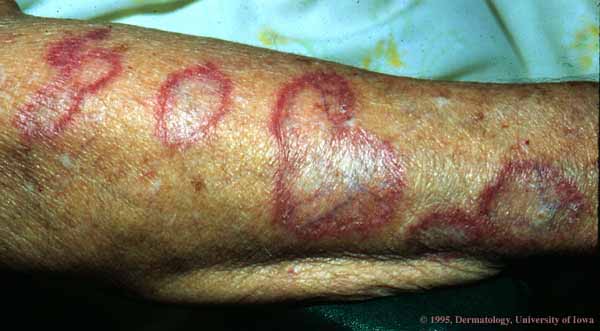Dear Dr. Deena,
Any tips on how to prevent heat related sickness this summer?
Jay
What a great question, Jay! With the heat wave upon us, here are some tips to stay cool this summer:
1. Drink plenty of water, even if you don't feel thirsty! I would recommend avoiding alcohol or caffeinated drinks, as these can lead to dehydration.
2. Avoid being outdoors during the hottest/sunniest times of the day, which is between 10 am and 4 pm. If you need to be outside, avoid strenuous activities outdoors which lead to increased sweating and ultimately dehydration. If you wish to perform strenuous activities during the day (exercise, gardening, etc.), do them indoors instead.
3. Spend more time in air-conditioned areas to keep your body temperature cooler. If you don't have access to air conditioning, visit your nearest government cooling center. They can be found online, like this one for my New York followers: http://www.nyc.gov/html/oem/html/hazards/heat_cooling.shtml
4. Summer is the perfect season for fresh, and delicious fruits. Make use of this by eating light, well-balanced meals consisting of more fresh fruits and vegetables. Avoid eating too many high protein foods, like meats, as these foods increase our metabolism which ultimately leads to increased body temperature and heat production.
5. Wear sunscreen to protect yourself from sun burn and skin cancer.
6. Wear light-weight, light colored clothing to keep cool and reflect the sun.
7. Wear a wide-brimmed hat that will provide shade over most of your face like this one:

8. Be aware of some of the symptoms of heat related illness. These include:
-Heat cramps: increased sweating with muscle cramps which are mainly in the legs
-Heat exhaustion: increased sweating, dizziness, nausea, vomiting, and/or increased weakness
-Heat stroke: body temperature > 103 degrees Fahrenheit, rapid pulse, confusion, loss of consciousness, extreme headache, and/or difficulty breathing. This is a medical emergency and if you are concerned about these symptoms please call 911!
Hope this information will keep you safe and healthy this summer. As always please feel free to leave comments below and email all questions to DoctorDeenaMD@gmail.com
**PLEASE REMEMBER IF YOU HAVE ANY QUESTIONS OR CONCERNS ABOUT YOUR HEALTH AND/OR BEFORE STARTING OR STOPPING ANY TREATMENT OR ACTING UPON INFORMATION CONTAINED ON THE SITE, YOU SHOULD CONTACT YOUR OWN PHYSICIAN OR HEALTH-CARE PROVIDER**
Any tips on how to prevent heat related sickness this summer?
Jay
What a great question, Jay! With the heat wave upon us, here are some tips to stay cool this summer:
1. Drink plenty of water, even if you don't feel thirsty! I would recommend avoiding alcohol or caffeinated drinks, as these can lead to dehydration.
2. Avoid being outdoors during the hottest/sunniest times of the day, which is between 10 am and 4 pm. If you need to be outside, avoid strenuous activities outdoors which lead to increased sweating and ultimately dehydration. If you wish to perform strenuous activities during the day (exercise, gardening, etc.), do them indoors instead.
3. Spend more time in air-conditioned areas to keep your body temperature cooler. If you don't have access to air conditioning, visit your nearest government cooling center. They can be found online, like this one for my New York followers: http://www.nyc.gov/html/oem/html/hazards/heat_cooling.shtml
4. Summer is the perfect season for fresh, and delicious fruits. Make use of this by eating light, well-balanced meals consisting of more fresh fruits and vegetables. Avoid eating too many high protein foods, like meats, as these foods increase our metabolism which ultimately leads to increased body temperature and heat production.
5. Wear sunscreen to protect yourself from sun burn and skin cancer.
6. Wear light-weight, light colored clothing to keep cool and reflect the sun.
7. Wear a wide-brimmed hat that will provide shade over most of your face like this one:
8. Be aware of some of the symptoms of heat related illness. These include:
-Heat cramps: increased sweating with muscle cramps which are mainly in the legs
-Heat exhaustion: increased sweating, dizziness, nausea, vomiting, and/or increased weakness
-Heat stroke: body temperature > 103 degrees Fahrenheit, rapid pulse, confusion, loss of consciousness, extreme headache, and/or difficulty breathing. This is a medical emergency and if you are concerned about these symptoms please call 911!
Hope this information will keep you safe and healthy this summer. As always please feel free to leave comments below and email all questions to DoctorDeenaMD@gmail.com
**PLEASE REMEMBER IF YOU HAVE ANY QUESTIONS OR CONCERNS ABOUT YOUR HEALTH AND/OR BEFORE STARTING OR STOPPING ANY TREATMENT OR ACTING UPON INFORMATION CONTAINED ON THE SITE, YOU SHOULD CONTACT YOUR OWN PHYSICIAN OR HEALTH-CARE PROVIDER**








